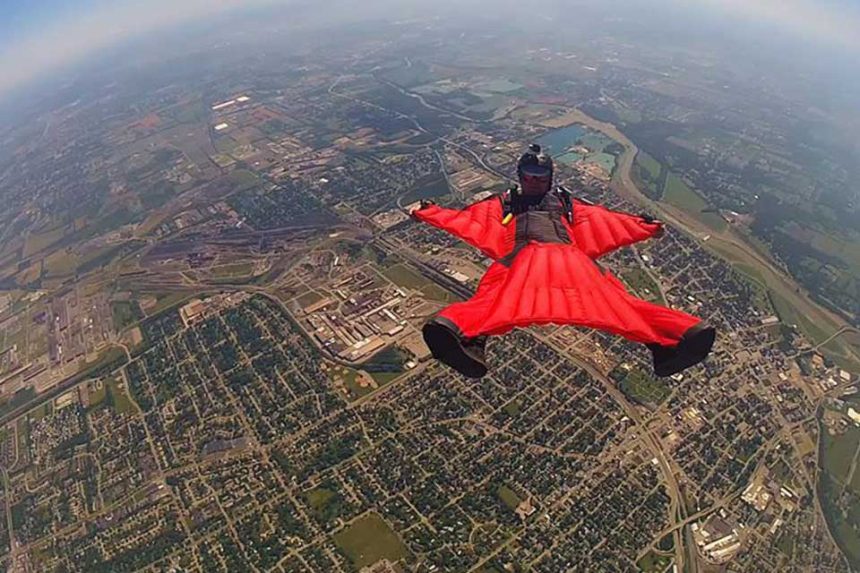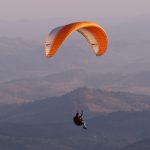Wingsuit flying (or wingsuiting ) is an extreme air sport where participants wear a specialized jumpsuit with fabric wings between the arms and legs, allowing them to glide through the air like a flying squirrel or bird. Pilots leap from cliffs, planes, or helicopters, reaching speeds of 100–200 mph (160–320 km/h) while controlling their flight path before deploying a parachute for landing.
Contents
- How Wingsuit Flying Works
- Why is Wingsuit Flying So Popular?
- 1. Ultimate Adrenaline Rush
- 2. Sensation of True Human Flight
- 3. Media & Social Media Boom
- 4. Competitive Scene & Records
- 5. Technological Advancements
- 6. Elite Community & Lifestyle
- 7. Breathtaking Locations
- Wingsuit Flying vs. Other Air Sports
- The Dark Side: Risks & Controversy
- Fun Facts
How Wingsuit Flying Works
- The Wingsuit:
- Made of nylon or polyester with airfoil-shaped wings (arm wings and leg wings).
- Increases surface area to generate lift-to-drag ratio (L/D)—advanced suits can glide 2.5–3 meters forward for every 1 meter dropped.
- Launch:
- BASE Jumping: From cliffs or structures (e.g., mountains, skyscrapers).
- Skydiving: From planes at 10,000–15,000 ft (3,000–4,500 m).
- Flight & Control:
- Pilots steer by shifting body weight, adjusting arm/leg angles, and arching their torso.
- Proximity Flying: Experts skim close to terrain (e.g., mountain ridges) for added thrill.
- Landing:
- A parachute is deployed at 2,500–4,000 ft (750–1,200 m) for a safe descent.
Why is Wingsuit Flying So Popular?
1. Ultimate Adrenaline Rush
- Combines skydiving, BASE jumping, and human flight—one of the most extreme sports on Earth.
- Proximity flying (inches from cliffs) delivers unmatched intensity.
2. Sensation of True Human Flight
- Unlike parachuting, wingsuits allow minutes of freefall gliding (vs. seconds in regular skydiving).
- Pilots describe it as the closest humans can get to flying like a bird.
3. Media & Social Media Boom
- Viral videos (e.g., Jeb Corliss’ “Grinding The Crack”) and documentaries (The Art of Flight) showcase jaw-dropping footage.
- Featured in films (Point Break remake, Transformers 3).
4. Competitive Scene & Records
- World Wingsuit League (WWL) hosts races and acrobatic competitions.
- Records:
- Distance Flown: 18.26 miles (29.4 km) by Kyle Lobpries (2017).
- Speed: 246 mph (396 km/h) in a hybrid wingsuit-skyrocket dive.
5. Technological Advancements
- Modern suits (e.g., Phoenix-Fly, Squirrel) improve safety and glide ratios.
- Tracking parachutes and impact-resistant helmets reduce risks.
6. Elite Community & Lifestyle
- Icons like Uli Emanuele (RIP), Alexander Polli, and Roberta Mancino inspire newcomers.
- Requires 500+ skydives/BASE jumps before wingsuit training—creating an exclusive, skilled subculture.
7. Breathtaking Locations
- Famous wingsuit hubs:
- Lauterbrunnen (Switzerland) – The “Mecca of BASE jumping.”
- Kjerag (Norway) – Cliff jumps with fjord backdrops.
- Mount Tianmen (China) – “Heaven’s Gate” arch flights.
Wingsuit Flying vs. Other Air Sports
| Feature | Wingsuit Flying | Skydiving | Paragliding | Hang Gliding |
|---|---|---|---|---|
| Speed | 100–200+ mph | 120 mph | 20–50 mph | 30–90 mph |
| Flight Time | 2–5 min freefall | 60 sec freefall | 1–4 hours | Hours (with lift) |
| Risk Level | Extreme (high fatality rate) | High | Moderate | Moderate |
| Skill Barrier | 500+ jumps required | Low (tandem friendly) | Beginner-friendly | Steeper learning curve |
The Dark Side: Risks & Controversy
- High Fatality Rate: ~1 death per 500 participants (mostly due to proximity flying errors).
- Legal Restrictions: Banned in some areas (e.g., parts of the Alps after fatal accidents).
- Ethical Debates: Critics argue it glorifies unnecessary risk.
Fun Facts
- The first modern wingsuit was invented in 1999 by Jari Kuosma (Finnish skydiver).
- “Wingsuit BASE jumping” is considered the most dangerous form of the sport.
- Squirrels and flying snakes inspired early wingsuit designs


















